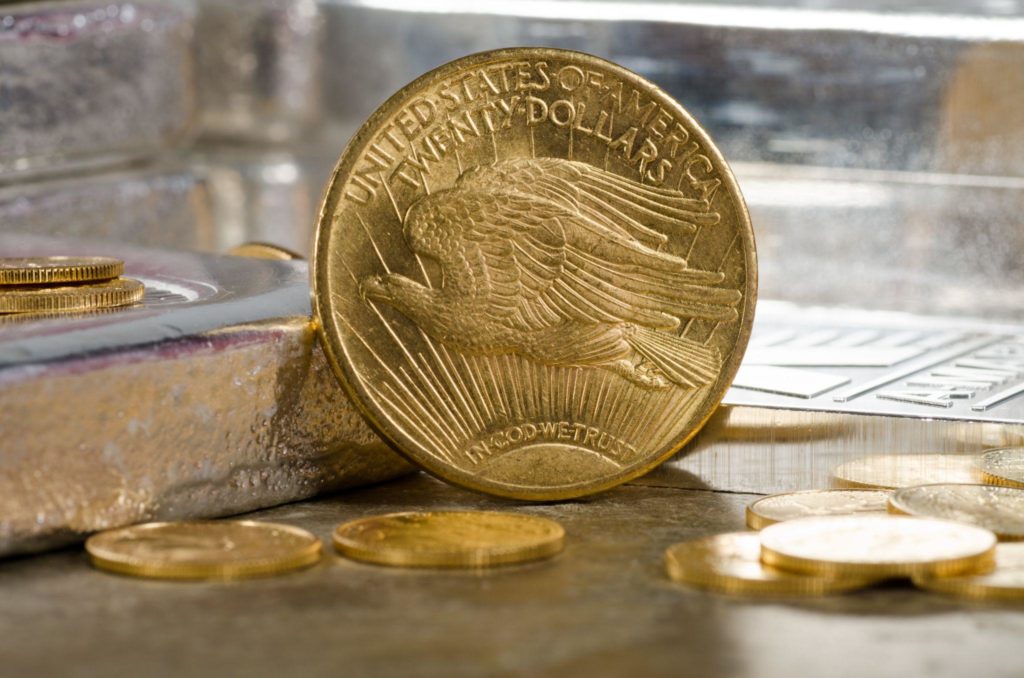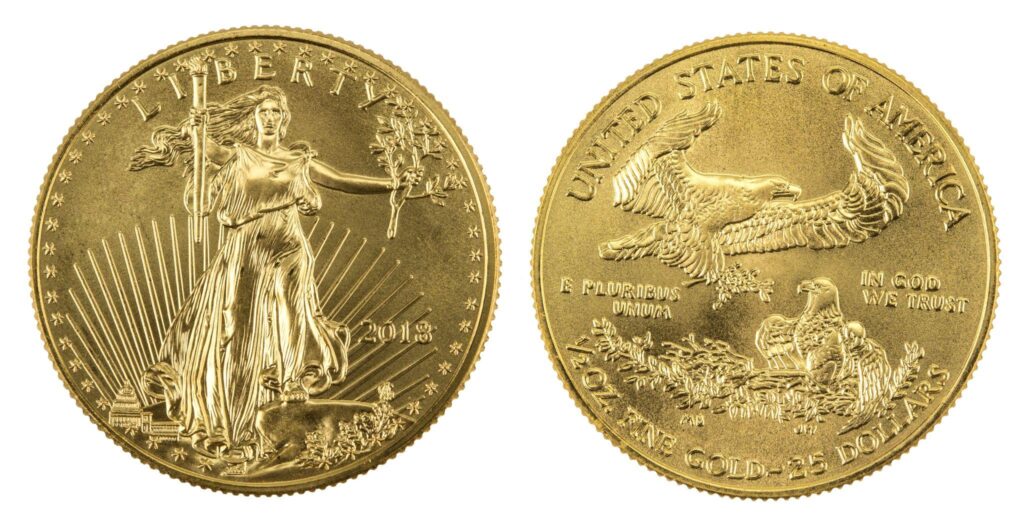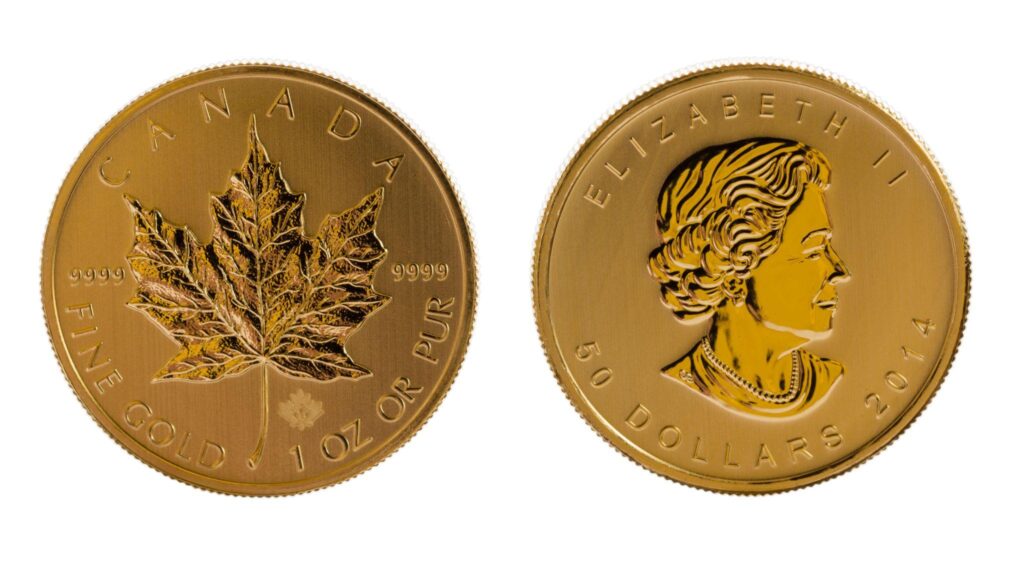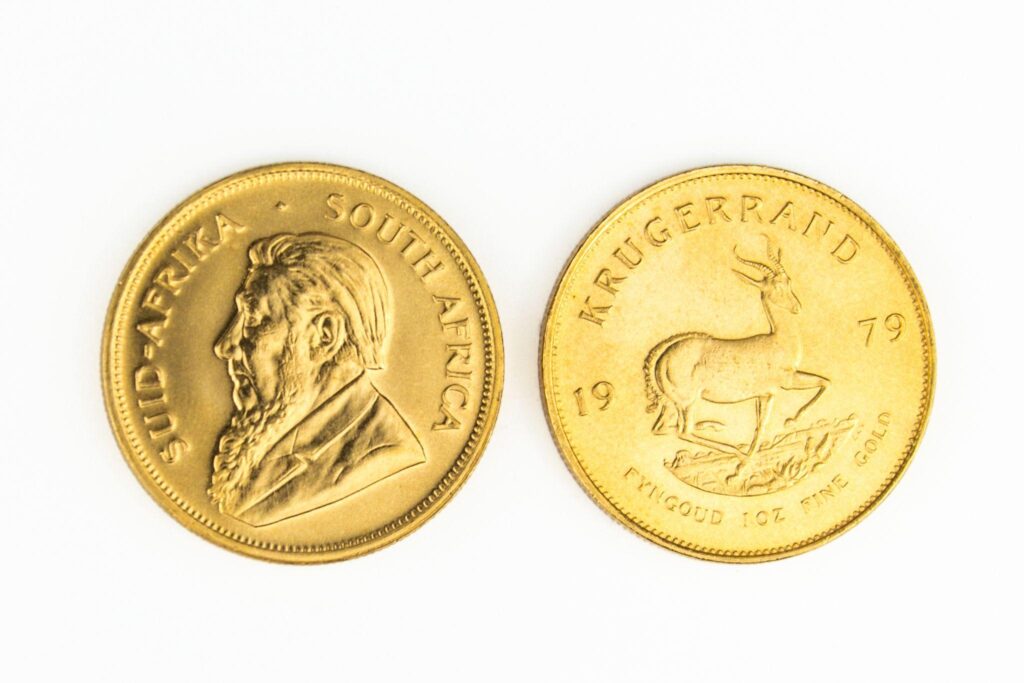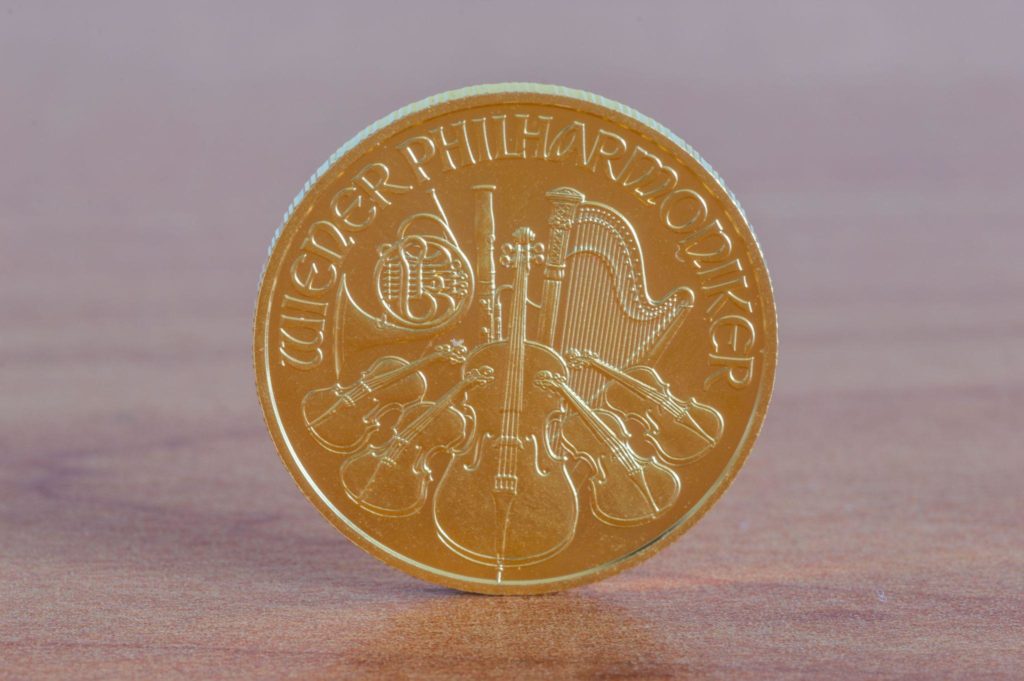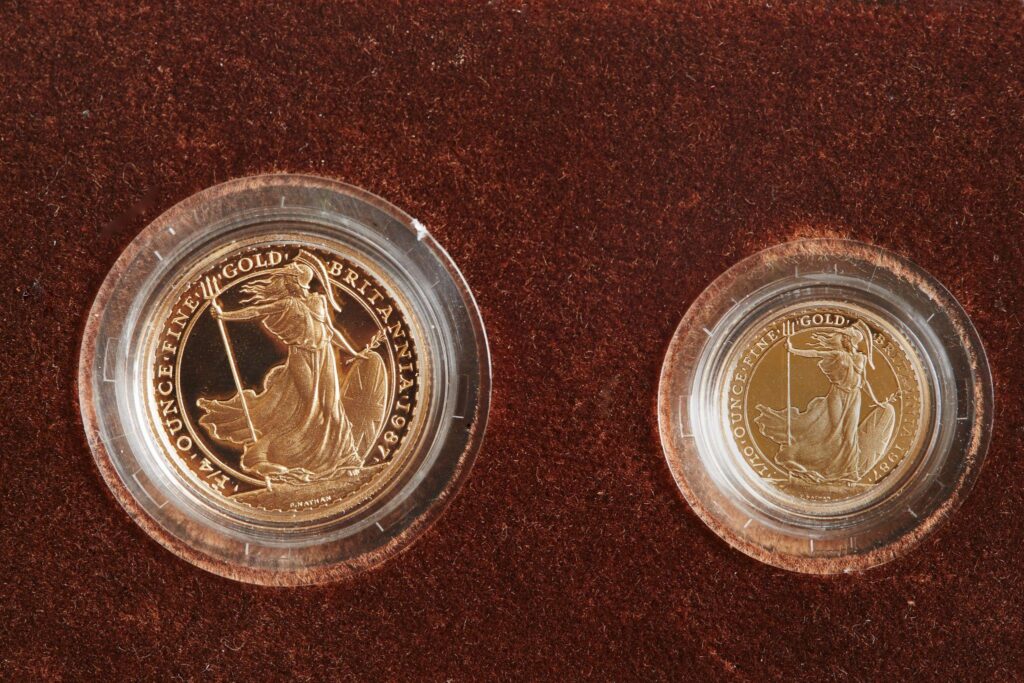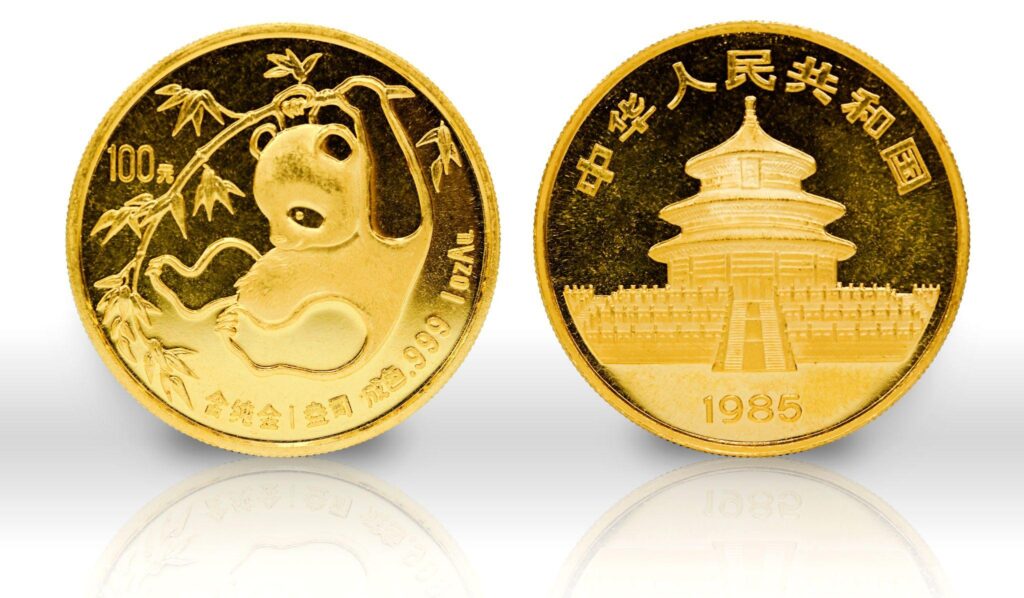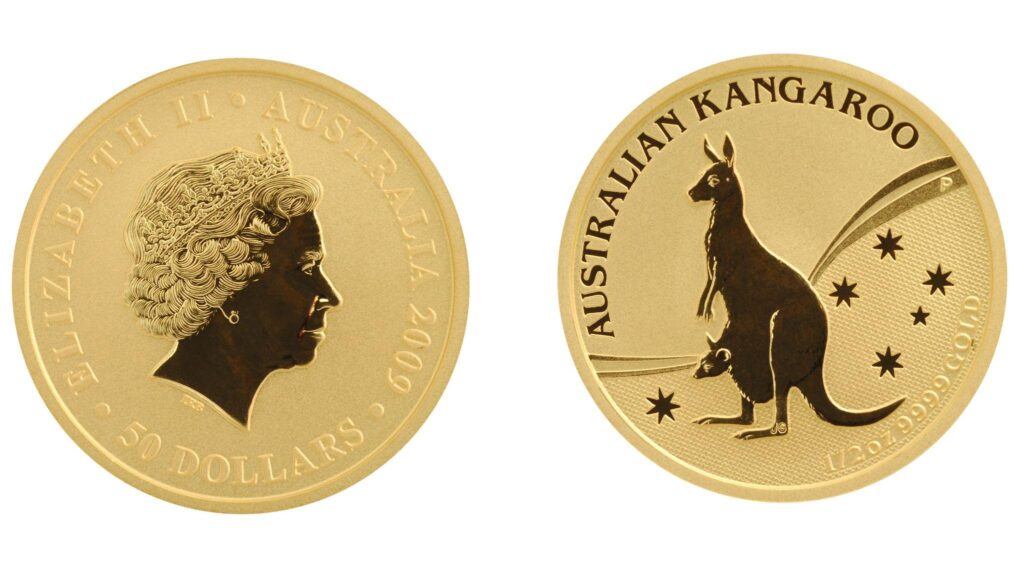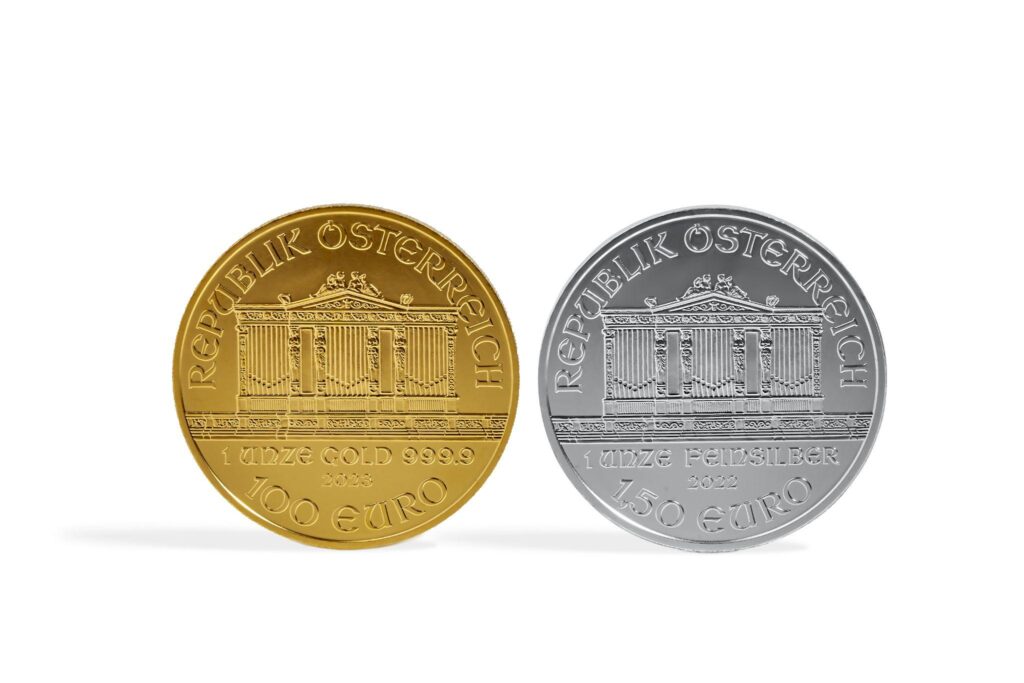Want to sell gold coins for cash? With the value of gold at elevated levels, there’s a high probability that if you inherited or purchased gold coins years ago, the price of gold will be higher today. As of May 8, 2024, the price of gold is $2,316.11 per ounce (per Kitco).
Where to Sell Gold Coins
So, where can you go to sell gold coins?
You Can Sell Coins “Near Me”
Most people will search for “sell gold coins near me,” “where can I sell gold coins near me, “coins for cash near me,” or “sell gold coins for cash near me.” You will find local brick-and-mortar pawn shops and jewelry stores. But, when looking for the best place to sell gold coins, this might not be your best option.
Brick-and-mortar buyers tend to make lower offers to people looking to sell gold coins. There are many reasons: Local buyers have to worry about paying rent and other expenses, like insurance, maintenance, utilities, and cleaning. This affects the price they’re willing to pay for gold. Here are some other challenges why you try to sell gold coins “near me”:
- The buyer might be inexperienced with gold coins, leading to an undervalued offer.
- If your gold coins are in poor condition, a local buyer might decline to make you an offer.
- The local buyer needs to maintain a margin, especially if reselling to a gold buyer like Cash for Gold USA.
You Can Sell Gold Coins Online
What is the best way to sell gold coins? We say it is often a good idea to sell gold coins online. When you work with an online buyer of gold coins like Cash For Gold USA, you can sell your coins with relatively little effort and get a good price for them. And, you can avoid many of the challenges to get a higher price locally. Here are some of the benefits you might enjoy when selling gold coins online:
Higher payouts: Their relative lack of overhead means that online buyers are more likely to give you a reasonable amount of money for your gold coins. Cash for Gold USA, specifically, will beat any written offer.
Quick cash: You can get your money quickly with an online buyer. We’ll present you with an offer within 24 hours of receiving your gold coins.
Up-to-date selling prices: Compared with pawn shops, online buyers are more likely to offer the most current rates for your gold. We based your offer on the current gold price.
Convenience: When you work with an online buyer of gold coins, you never need to travel. The buyer can ship a mailer straight to your address.
More selling options: Online buyers are more willing to consider badly damaged coins that jewelry shops and pawn shops might reject because they look at the weight and purity of the gold.
Price “Beat” Guarantee: Cash for Gold USA will beat any competitor’s written offer or return your items to you free of charge.
Cash For Gold USA has served thousands of customers, paying millions of dollars to those selling their gold coins, valuables, and precious metals including gold, silver, platinum, and palladium. Cash for Gold USA buys all gold coins regardless of denomination, condition or country of origin.
Get your free Appraisal Kit now:
How to Sell Gold Coins for Cash
When you want to sell your gold coins, here are some tips:
- Find a reputable buyer. Look at their Better Business Bureau rating and customer reviews. We have an A+ BBB rating and many five-star reviews from our customers.
- Consider selling gold coins online. When you sell gold coins, it is a good idea to get multiple offers. While the common view is if you need money fast, you should sell locally, Cash for Gold USA pays out quickly, within 24 hours of receiving your gold coins.
- Research the value of your coins. While the value is primarily based on the gold content and weight, coins with numismatic or historical value might be worth more than the gold content.
What Gold Coins are Worth
Three basic factors are considered when determining the value of a coin:1
- Date – When was the coin made?
- Mintmark – This small mark indicates the mint where the coin was made.
- Condition – What is the coin’s physical appearance?
One easy way to get a rough estimate of the value of your gold coin is to look up the retail price of the coin that dealers are currently asking. Keep in mind, the retail price is always higher than what you would get if you sell your coin to a dealer.
Using a gold coin grading scale will help you get a more accurate estimation of your gold coins. Coin grading scales are standardized systems for assessing a coin’s true value. The most recognized grading scale is from The American Numismatic Association (ANA).2
The grading standards for uncirculated coins range from MS-70 (perfect coin) to MS-60 (unattractive, dull, or washed-out coin). The scale also includes grades for circulated coins, ranging from AU-58 (barely trace of wear) to Poor-1 (only basic coin type identifiable). These grading standards are considered official by the ANA.2
The value of your gold coin is also based on its Actual Gold Weight (AGW), as measured in troy ounces. AGW is the weight of the gold multiplied by its purity.3 You can determine the purity by referring to the coin’s karat number, a coin marking that refers to the relative amount of gold of the coin. For instance, a 22-karat coin is 22 parts gold and 2 parts non-gold materials. Here are some common karat numbers and their composition of gold:
- 24 karat: 99.9% gold
- 18 karat: 75% gold
- 14 karat: 58.5% gold
- 9 karat: 37.5% gold
Certain gold coins that have historical significance or other uncommon characteristics (e.g., scarcity) are often worth much more than the spot price of their gold content. If you’re still uncertain how to determine the value of your gold coins, you may wish to consider having it professionally appraised by a reputable dealer. Or, if you know you want to sell your gold coins, get a free Appraisal Kit and we’ll evaluate your coins for you to make you a cash offer.
Popular Gold Coins
Gold coins are a popular investment choice for many in the United States. While there are many different types of gold coins available, there are a few that are popular among buyers and sellers. Factors behind the most popular gold coins include:
- Historical significance: A coin that can be considered a historical object or artifact holds an academic and social value that goes beyond its material worth.
- Craftsmanship: If a coin is especially intricate or well made, it can be more desirable based on the skill or hours of labor required to make it.
- Uniqueness: Limited coin designs, rare pieces, misprints, and other uncommon coins can be extremely desirable for their collectible and artistic value.
- Quality and purity: The higher the amount and quality of a coin’s gold content, the more it will be worth in material value. This usually makes the coin more desirable.
- Investment and trading value: A coin can also be popular because it is especially easy to trade and acquire as an investment medium.
These are some of the most popular gold coins that are bought and sold:
United States Saint-Gaudens Double Eagle
Produced from 1907 to 1933, the $20 Saint-Gaudens double eagle4 is many collectors’ pick as the most beautiful gold coin ever made. The obverse of the coin shows Lady Liberty holding a torch in her right hand and an olive branch in her left. The reverse shows an eagle flying over a radiant sun; most of these coins also have the words “In God We Trust” along the curvature of the sun. The coin gets its name from its designer, Augustus Saint-Gaudens (1848-1907).
During the Depression, the U.S. Treasury melted down millions of gold coins, which explains the scarcity of these coins and contributes to their perennially high demand on the collector’s market.
United States American Gold Eagle
The American Gold Eagle5 coin arrived on the scene in 1986 and quickly became one of the most prized collectibles on the market. These American Eagle coins exist in four denominations: 1/10 oz ($5), 1/4 oz ($10), 1/2 oz ($25), and 1 oz ($50). The obverse of the coin is based on and closely resembles the Saint-Gaudens double eagle design, with its rendition of Lady Liberty. The reverse shows either an eagle flying over a nest (1986-2020) or an eagle’s head in profile (2021-present).
United States Indian Head Eagle
The Indian Head eagle6 is another dazzling coin that sports the distinctive designs of Augustus Saint-Gaudens. Produced from 1907 to 1933 (but only on an intermittent basis after 1916) with a $10 face value, it features a profile view of the goddess Liberty wearing a Native American headdress (obverse) and an eagle standing on an olive branch (reverse). As with Saint-Gaudens double eagle, these coins were melted down in great quantities in the late ’30s, which contributes to the relative scarcity of certain years today. The coins issued in 1907 omitted the customary motto “In God We Trust,” a move that proved to be extremely unpopular with the public. From 1908 onward, the coins bore the motto on the reverse.
Canadian Gold Maple Leaf
First minted in 1979, the Canadian Gold Maple Leaf7 is another coin that is renowned for its beautiful design. It displays a profile of Queen Elizabeth II on the obverse and the Canadian Maple Leaf on the reverse (which inspires the coin’s name).
Until November 1982, Gold Maple Leafs were minted with .999% purity. Since then, the Royal Canadian Mint has produced the coin at .9999% purity; the only exceptions are occasional special edition releases that can boast a “five nine” purity (.99999%). Among these special editions is the Big Maple Leaf (BML) that was created in 2007. This very rare coin—only six were produced—has a face value of $1 million.
The early Gold Maple Leafs were issued only in 1 oz denominations, but the range of options has since been expanded to include 1/2 oz, 1/4 oz, 1/10 oz, 1/20 oz, and 1 gram coins as well. All types of Gold Maple Leaf coins remain highly sought-after by collectors around the world.
South African Krugerrand
Here is a coin that is famous well beyond the realm of professional collectors—the Krugerrand8 has been a byword for wealth and prestige since it was first released in July 1967. For many, it is the most desirable of all gold bullion coins, but its association with South Africa’s apartheid government traditionally made it subject to various sanctions that restricted access to it. For instance, the U.S. banned imports of Krugerrands in 1985. However, the dissolution of apartheid in 1991 led to a boom in Krugerrand collecting.
The Krugerrand, named after South African president Paul Kruger (1825–1904), is produced by the South African Mint, which also issues various limited-edition variants intended for the collector’s market. The Mint also released a special 50th anniversary Krugerrand in 2017 that was available in three versions: platinum, silver, and gold.
The obverse of the Krugerrand shows the bearded Kruger in profile, while the reverse depicts an antelope.
Vienna Philharmonic
Easily among the most popular of all European bullion coins, the Vienna Philharmonic9 first came out in 1989 to honor the world-famous orchestra of the same name. It was the world’s best-selling gold coin in 1992, 1995, 1996, and 2000, and it remains in high demand today. The obverse of the coin features the Musikverein Pipe Organ and the reverse shows a collection of other musical instruments associated with the Vienna Philharmonic.
The Vienna Philharmonic is most widely associated with its gold (99.99% pure) version, but it is also available in platinum (99.95%) and silver (99.9%). The silver coin has been issued since 2008; the platinum, since 2016.
The Gold Philharmonic can be found in 1⁄25 ozt, 1⁄10 ozt, 1⁄4 ozt, 1⁄2 ozt, and 1 ozt versions.
Australian Gold Nugget
Produced by the Perth Mint since 1986, the Australian Gold Nugget10 comes in quite a few denominations: 1⁄20 oz, 1⁄10 oz, 1⁄4 oz, 1⁄2 oz, 1 oz, 2 oz, 10 oz, and 1 kg—the last few named in this sequence are among the largest gold coins in the world.
Unusually, the design of this coin is updated every year. From 1986-1988, the design on the reverse depicted the gold nuggets that inspired the coin’s name. Since then, the coin’s reverse has shown different kangaroo designs, which is why this valued collector’s item is often referred to as the Australian Gold Kangaroo. The obverse of the coin always displays a profile view of Queen Elizabeth II.
In 2011, the Perth Mint created a special version of this coin to honor Queen Elizabeth’s visit to Australia. The 1000kg coin is the largest in the world, weighing ten times more than the Big Maple Leaf, and is valued at over $53 million (AUS).
Notable gold coins such as the aforementioned are popular among investors and private collectors alike. However, it should be kept in mind that gold coins have significant value even if they don’t belong to one of these famous issues. At minimum, gold coins are always worth their melt value.
Gold American Buffalo
The American Gold Buffalo is the first-ever U.S. coin to be 24K gold with 0.999 fineness and 1 troy oz size. This coin was first produced in the United States in 2006, and it is well-loved for its beautiful artwork. Both sides of the coin feature work by American sculptor James Earle Fraser, with the front mimicking the appearance of a 1913 buffalo nickel. The reverse features the image of a buffalo, based on a real buffalo who lived in the Central Park Zoo in the 1910s.
Gold British Britannia
The Royal Mint first introduced this coin in Great Britain in 1987, and its elegant design and high fineness makes it very popular. The obverse features a variety of British monarchs, depending on the year it was minted. The reverse features a depiction of Britannia, a figure that personifies Britain. Britannias are primarily minted in a 1 troy oz size. Other sizes, including 1/2, 1/4, and 1/10 oz, have also been produced.
Chinese Gold Panda
First introduced in China in 1982, this is a highly collectible coin made from 0.999 fine gold. Both sides of the coin feature different designs each year, with the exception of 2001 and 2002 where the same design was used, but the reverse design always features at least one panda. While initially the Chinese Gold Panda coins were measured in troy ounces, since 2016, they’ve been measured in metric units (grams) to align more closely with the metric system used in China. They are now issued in sizes of 1 gram, 3 grams, 8 grams, 15 grams, and 30 grams, which are close, but not exactly equivalent, to 1/20 oz, 1/10 oz, 1/4 oz, 1/2 oz, and 1 oz, respectively.
Australian Gold Kangaroo
Initially released as the Australian Gold Nugget in 1986 by the Perth Mint, its reverse design was changed to feature a kangaroo in 1990. This resulted in the coin being popularly known as the Australian Gold Kangaroo. The reverse image changes annually, but always features at least one kangaroo, while the obverse maintains a portrait of Queen Elizabeth II. This is one of the largest, most valuable coins currently available. It is also still usable as legal tender. Each year’s designs are different, but all coins minted since 1990 have featured at least one kangaroo on the reverse. The Gold Kangaroo is available in 1 kilogram, 1 oz, 1/2 oz, 1/4 oz, and 1/10 oz.
Austrian Gold Philharmonic
This coin was first minted in 1989 as legal tender worth 2000 Schillings (100 Euros, today). It’s made from 0.999 fine gold and is extremely popular for its artwork, based on the Vienna Philharmonic orchestra. The obverse depicts a beautiful pipe organ, while the reverse depicts a selection of other instruments.
The Austrian Philharmonic is one of the best-selling coins in the world, and it is available in five sizes, measured in troy ounces: 1/25 oz, 1/10 oz, 1/4 oz, 1/2 oz, and 1 oz. However, the 1/25 oz size was introduced more recently in 2014.
Although some of these coins are not produced in the United States, they are still popularly traded in the country. These coins are produced by their respective national mints and feature unique designs on their obverse and reverse.
FAQs About Selling Gold Coins
Is it safe to sell gold coins online?
Yes! As long as the business is trustworthy. Credible online companies like Cash for Gold USA can often offer you a more competitive price in the gold market than a brick and mortar store because we don’t have the added cost of operating a retail storefront. We also provide you with industry-leading service and the safest and most efficient experience. Our transactions have been proven to be extremely safe, and we are with you every step of the way.
How much will I get if I sell my gold coins?
When you request a free Appraisal Kit to sell gold coins to us, here is our process: We will ship you a mailer so you can send us your coins. When we receive your gold coins and any other gold, silver, or diamonds, our certified evaluators will analyze the gold coins for weight and purity. We will base our offer on the current gold price and present it to you within 24 hours. What you will get if you sell gold coins will depend on weight and purity.
Which gold coin is the most famous?
Arguably the most famous gold coin is the South African Krugerrand, as it was the first gold bullion coin to be produced in modern times (1967) and was the best-selling coin for more than a decade. The Krugerrand has dropped in market share over time and is not necessarily the most traded, but it remains very popular and famous for its historic role.
Which gold coin is traded the most often?
The most traded gold coin in the U.S. and the world is the Gold American Eagle. Other coins include the Gold Buffalo, the South African Krugerrand, Canadian Gold Maple Leaf, and Chinese Gold Panda.11
What are the most popular gold coins in the U.S.?
The most common United States gold coin is the American Eagle. It’s the leading gold bullion program from the U.S. Mint, with over 1.5 million 1-oz coins sold in May 2023 alone.1
Are gold coins a good investment?
As a physical, tangible asset, gold investing is a convenient and unique way to diversify your portfolio. It is considered a hedge against inflation and other economic changes. Even if the face value of other currencies drop, your gold will still have material value.
Why should I sell my gold coins?
Here are some reasons why you might consider selling your gold coins:
- When gold prices are high (check Kitco12)
- You need cash now
- You want to diversify your investments
- Reduced interest in coin collecting
What is the best time to sell gold coins?
In many cases, the best time to sell is when the price of gold is at high levels versus historic values. For example, one could research the chart of historical data for real (inflation-adjusted) gold prices per ounce to gauge the data. However, it is difficult to predict the gold market, making it hard to recommend the best time to sell gold coins.
Sources:
1. American Numismatic Association – Mintmarks on U.S. Coins, https://blog.money.org/coin-collecting/mintmarks-on-united-states-coins. Retrieved Jan. 9, 2024
2. American Numismatic Association – Official Coin Grading Standards, https://www.money.org/official-grading-standards. Retrieved Jan. 9, 2024
3. Bullion By Post – How Much is a Gold Coin Worth? https://www.bullionbypost.com/index/collectible-coins/how-much-is-a-gold-coin-worth. Retrieved Jan. 9, 2024
4. Wikipedia – Saint-Gaudens double eagle, https://en.wikipedia.org/wiki/Saint-Gaudens_double_eagle. Retrieved Jan. 9, 2024
5. Wikipedia – American Gold Eagle, https://en.wikipedia.org/wiki/American_Gold_Eagle. Retrieved Jan. 9, 2024
6. Wikipedia – Indian Head eagle, https://en.wikipedia.org/wiki/Indian_Head_eagle. Retrieved Jan. 9, 2024
7. Wikipedia – Canadian Gold Maple Leaf, https://en.wikipedia.org/wiki/Canadian_Gold_Maple_Leaf. Retrieved Jan. 9, 2024
8. Wikipedia – Krugerrand, https://en.wikipedia.org/wiki/Krugerrand. Retrieved Jan. 9, 2024
9. Wikipedia – Vienna Philharmonic (coin), https://en.wikipedia.org/wiki/Vienna_Philharmonic_(coin). Retrieved Jan. 9, 2024
10. Wikipedia – Australian Gold Nugget, https://en.wikipedia.org/wiki/Australian_Gold_Nugget. Retrieved Jan. 9, 2024
11. CBS News – 5 top gold coins for investment purposes, https://www.cbsnews.com/news/top-gold-coins-for-investment. Retrieved Jan. 9, 2024
12. Kitco – Precious Metals/Gold, https://www.kitco.com/price/precious-metals/gold. Retrieved Jan. 9, 2024
Actual Customers
About Cash for Gold USA
Cash for Gold USA is a prominent online buyer of gold, silver, platinum, and palladium in the United States. Since 2005, we have paid millions to thousands of customers for their unwanted or broken precious metal jewelry. We offer a quick and straightforward selling process, ensuring customers receive prompt and competitive offers for their items. Learn more about us and what our customers say about Cash for Gold USA, or request your free Appraisal Kit now:


